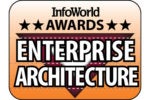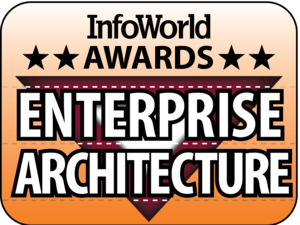- Successfully run its first Scaled Agile Framework program, with more than 700 people involved at the height of staffing
- Integrated software from 15 different sources through more than 400 integration points
- Institutionalized a multispeed approach to IT delivery (separating systems of engagement, systems of record, and systems of insight)
- Delivered a new digital experience based on more than 40 APIs
- Established a strategic next-gen integration platform that can reliably and cost-effectively deliver large numbers of hybrid integrations
Prior to the initiative, EA had been sitting “outside” delivery projects. For the Consumer Business program, architects needed to become integral parts of delivery scrum teams, while at the same time providing an architectural runway to keep the program moving at optimal speed.
To accomplish its goals, the company needed approximately 70 architects to engage in the program, divided into three distinct roles: systems architects to engage at the program level; solutions architects to create solution sketches and determine the information flow; and integration architects to translate information needs into actual integration designs, which included services and APIs, as well as managed file transfers and data transformations.
To further promote quick decisions, the EA practice established an “architecture risk scrum” held at 4 p.m. every day that brought together all three types of architects to address pressing issues. The scrum has become “tier 0” of Aetna’s overall EA governance scheme. In addition, solution and integration architects were empowered to focus on (and become experts in) their designated aspect of a complex hybrid project. Architects became part of delivery teams; risk and value became the focus rather than compliance.
The benefits included integration of software from 15 different sources through 400 integration points, delivered in 10 months and at less than 25 percent of the traditional cost of integration. Design defects were reduced by 50 percent and delivery speed was doubled. All told, 90 percent of architecture risks were eliminated within five days.
Over the next three years, Aetna plans to turn its “architecture guild” into a source of trusted advice for IT and business executives. Already, requests for architecture resources have never been higher, thanks to a reputation for turning vision into action. EA Awards judge Gary Smylie observed that Aetna’s EA practice had “moved from information and app architecture to solution and integration architecture.” He also praised the organization’s success in “quickly addressing architecture risks and increasing delivery speed.”
Cummins: Service-enabling digital transformation
Cummins is a global leader in designing, manufacturing, and servicing engines and related technologies, from fuel systems to power generators.
Five accelerators were identified by Cummins executives as strategic objectives for accelerating growth in revenue and profitability: Adopt a growth mindset, move from multinational to global, become excellent in customer support, achieve supply chain excellence, and lead in critical technologies. These accelerators require multiple transformations across the Cummins enterprise.
In endeavoring to meet these goals, Cummins faced the challenges of global deployment, siloed processes, and limited IT lifecycle management with weak governance. The company was also hampered by redundant and rigid applications, customizations and complex dependencies, multiple sources of truth, and limited skills coupled with lack of continuous training. On top of all that was a lack of enterprise-level transformation planning.
EA stepped up as a change leader and innovator to make the organization more agile and flexible. The focus was on five goals:
- Ensure successful IT solutions delivery consistently
- Drive IT operational excellence through simplification, standardization, and reuse
- Enable agile delivery
- Support continuous innovation
- Build emerging technology expertise
The EA program created an architectural foundation of frameworks, governance processes, standards, and practices to guide transformation initiatives. The team also provided an enterprise information architecture; technology road maps; and a service excellence framework for enterprise integration, information, application platform, digital platform, and security service centers.
Cummins' EA team can point to tangible business outcomes as a result of its work. These range from increased revenue from B-to-B, e-commerce, and telematics operations to cost savings from application rationalization and infrastructure simplification -- not to mention capability improvements across the Cummins business. The value of architecture in terms of successful transformation has been quite visible to stakeholders, earning the EA team credibility and support it can build on going forward.
EA Awards judge Gary Smylie noted that the EA group at Cummins “showed a good focus on accomplishing business strategy, with solid examples of ROI from their work.”









